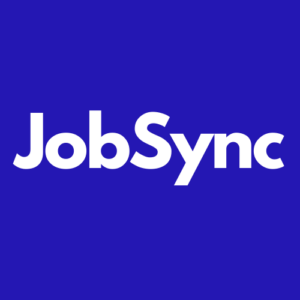
AI and automation can save recruiters hours of time with automated responses, resume screening, and auto-scheduling. Yet the ultimate skill may be knowing when to involve humans.
“Many of the universals we see year after year relate to communication and feedback loops. Regardless of industry, and whether it’s a mix of human interaction and automation, when those are consistent, we see a bump in positive candidate sentiment,” says Kevin Grossman.
Grossman is the VP of Research at ERE Media. For 13 years, he has published the CandE awards, an annual benchmark study focused on measuring and improving candidate experience in recruitment. In 2024, the CandEs recognized 52 North American employers with the highest candidate experience ratings.
Debuting in the 2024 study: artificial intelligence. Researchers asked Talent Acquisition (TA) teams if they used generative AI in their recruiting practices, and they asked candidates to share their experiences with AI in hiring.
Their responses paint a murky picture. While more companies are using AI to manage rising application volumes, candidates are reporting tech resentment. “Automation has been the bane of candidates for a long time, but it’s also really helpful to employers for managing application flow,” Grossman says. With TA teams “leaner than ever,” and application volume “up 50% in some sectors,” he sees AI as crucial to improving the candidate experience – as long as “the human interaction investment is consistent.”
The Recruiter’s Perspective
Candidates are saying loud and clear that they want more feedback and faster responses from recruiters. When they’re not waiting weeks to hear back, they have a better experience. Many CandE highest-rated companies meet this expectation by dispositioning candidates quickly, often within 3-5 days after an application. When hundreds or thousands of resumes flood in, that would be impossible without recruiting tech.
Increasingly, recruiters are using AI to weed out candidates that would never be hired in the first place, like those who are not a geographic match. Top CandE performers leverage AI to manage their top-of-funnel filtering, as well as for chatbots, interview scheduling, and administrative tasks.
Lynda Whittemore, Director of Talent Acquisition at Room & Board, says technology is essential to off-load overstretched recruiters and “save a ton of time.” Her team uses AI so often that “it feels like a staff member,” mostly to create content and communicate with candidates. Elizabeth Cearley, Talent Acquisition Manager at the Friedkin Group echoes this sentiment. She says the company “has some really good technology” for “interview scheduling, surveys, interview note-taking, etc.” Technology helps her recruiters “spend more time and focus on the candidate,” she says.
CandE’s benchmark data mirrors a recent BCG survey of chief human resources officers. The study found that of the companies experimenting with AI, 70% are doing so within HR and the top use case is talent acquisition. The vast majority of firms said they were seeing the benefits of AI assistance, with over 10% reporting +30% productivity gains.
Have you read?
- Does AI In Recruiting Produce Viable Outcomes?
- AI In Talent Acquisition: Should Recruiters Be Worried…Or Relieved?
The Candidate Perspective
You might assume that an AI-dominated recruitment process would lead to sterile and impersonal candidate experiences — but the picture is more complicated. Candidates want timely, consistent communication above all else, and they don’t mind when tech smooths out the process. For example, when candidates could ask a chatbot questions during the application process, their experience rating shot up (from 13 to 69 on the survey’s NPS scale).
“Of course we all want to talk to humans, but if things are happening, and a candidate is engaged and they’re getting to that next step in a timely way, there’s more positive sentiment,” Grossman says. So it doesn’t seem to be the tech or automation itself driving candidate tech resentment. The issue is how it’s used.
Candidates are not happy with AI being an actor in and of itself. They believe AI is making selection decisions at every stage of the recruiting process and are worried it’s automatically rejecting good candidates with no human oversight. “We know that’s not true and the employers know that’s not true. But that’s a growing misconception that will balloon in the years to come,” researchers write in the benchmark report.
Of the candidates surveyed for the CandEs, 90% were rejected, or “regretted” as Whittemore puts it. This is important as not getting the job skews candidate resentment. Even considering this, there’s a perception gap regarding AI in recruiting. Recruiters rely on it, candidates are wary of it, and technology is rapidly advancing regardless of either side’s views.
Have you read?
Is Tech Overused or Underused?
Despite the AI hype, less than 20% of CandE participants used it in their recruiting processes. While Grossman expects this number to rise in the coming years, he’s concerned the tech is under-used and under-optimized. “When we think about the top-of-funnel, and how many ATS’s can filter, match, and even rank candidates, there’s a lot of hesitancy,” he says. This is due to compliance concerns and lack of recruiter training, among other reasons. But there’s scope for more AI co-piloting when “the volume just continues to come.”
Compliance is a big topic for another day. For now, let’s acknowledge that organizations using AI in recruiting must navigate complex regulations. The latest iterations, like the EU AI Act, have substantial requirements around transparency and human oversight. So it’s not just candidates who want a human touch—regulators do too.
Bradley Cooper, AVP Technology at cloud-based staffing firm SASR Workforce Solutions, understands the business impact of over-automation. When he joined the company, their recruiting system was throwing 24,000 candidates into a funnel with “no gate to stop somebody automatically going through the process…and no way to communicate with them.” Candidates were asked for their Social Security numbers and background checked before a human even looked at their resume. Automation is still part of SASR’s recruiting, and the company uses tech to match candidates with the right-fit job and guide them smoothly through to interview. But Cooper says the company’s new platform prioritizes the candidate experience, starting with, “Where is it critical to have that human connection; to have that conversation?”
Have you read?
- The AI Dilemma: An Industry Lawsuit Sparks Debate on Recruitment Technology Accountability
- Asking Too Much, Too Early: What Happens When Onboarding Slips into the Application Process?
Involving Humans in the Conversation
AI and automation are here to stay. But for them to deliver in full, TA teams must proceed mindfully and recognize the irreplaceable value of human conversations. Over-reliance on AI — or the perception of it — can damage relationships with candidates. No one wants to be treated as a keyword string or an algorithmic output.
AI is still a young technology, and TA teams are guiding its early steps. It will take measurement and iteration to gauge where AI can automate components of the recruiting process, and where a human touch is necessary. Our CandE award-winning experts are working hard to find that delicate balance and share the following insights:
1. Develop a candidate-first mindset.
Candidates want easy applications, rapid responses, and clear communication, and technology can help. But as Cooper says, “The human aspect is one of the most important parts of the process.” He’s using candidate survey data to reshape areas of the TA process that candidates dislike, identifying exactly where human touchpoints can improve the candidate experience. Ultimately, it’s about using AI and automation to serve the candidate and not the other way round. “Just understanding your candidate’s journey allows you to make those adjustments,” he says.
2. Take a blended approach.
The story often portrays a clash between recruiting technology and the candidate experience, as if it’s a zero-sum game. But when it frees up recruiting teams for more hands-on time with potential candidates, tech can be a great asset. Room & Board enhanced their ATS dashboard to highlight ‘stalled’ candidates and those nearing the 5-day follow-up deadline after applying. There’s been a significant decrease in ‘candidate juggling’ and recruiters were able to quickly prioritize candidates with human outreach.
3. Work together across the organization.
Talent teams aren’t the only employees capable of building meaningful relationships with candidates. Adding other representatives can signal the company’s uniqueness to candidates, says Whittemore. She works with Room & Board’s delivery and distribution leaders to bring talent into the funnel and nurture relationships with candidates in the pipeline. “We’re seeing so many great benefits of differentiation in the world of automation and AI, but we can stand out with a relationship-based approach, leaning on [others] where historically [those relationships] sit exclusively with the recruiting team,” she says.
Final Words
Whether your tech is overused or under-optimized, Grossman stresses it’s a tricky labor market. The sheer volume of applications is an uphill battle for talent teams, and no tech will fix the precarious positions that candidates are in right now. “You can have the greatest response-time concierge and every automated candidate experience in the world, but the point you tell someone no, [candidate experience] is always going to skew negative,” he says.
Grossman believes it’s going to be “really messy and hard” to fully optimize recruiting technologies so that every candidate receives a fair, positive, and transparent experience. But he emphasizes that “the human interaction investment should be consistent over time” and organizations are “going to hit the ceiling in regards to what our tech stack can do.” Recruiters still need to sell the company, find a culture match, and prioritize the candidate experience—something AI alone cannot achieve.



